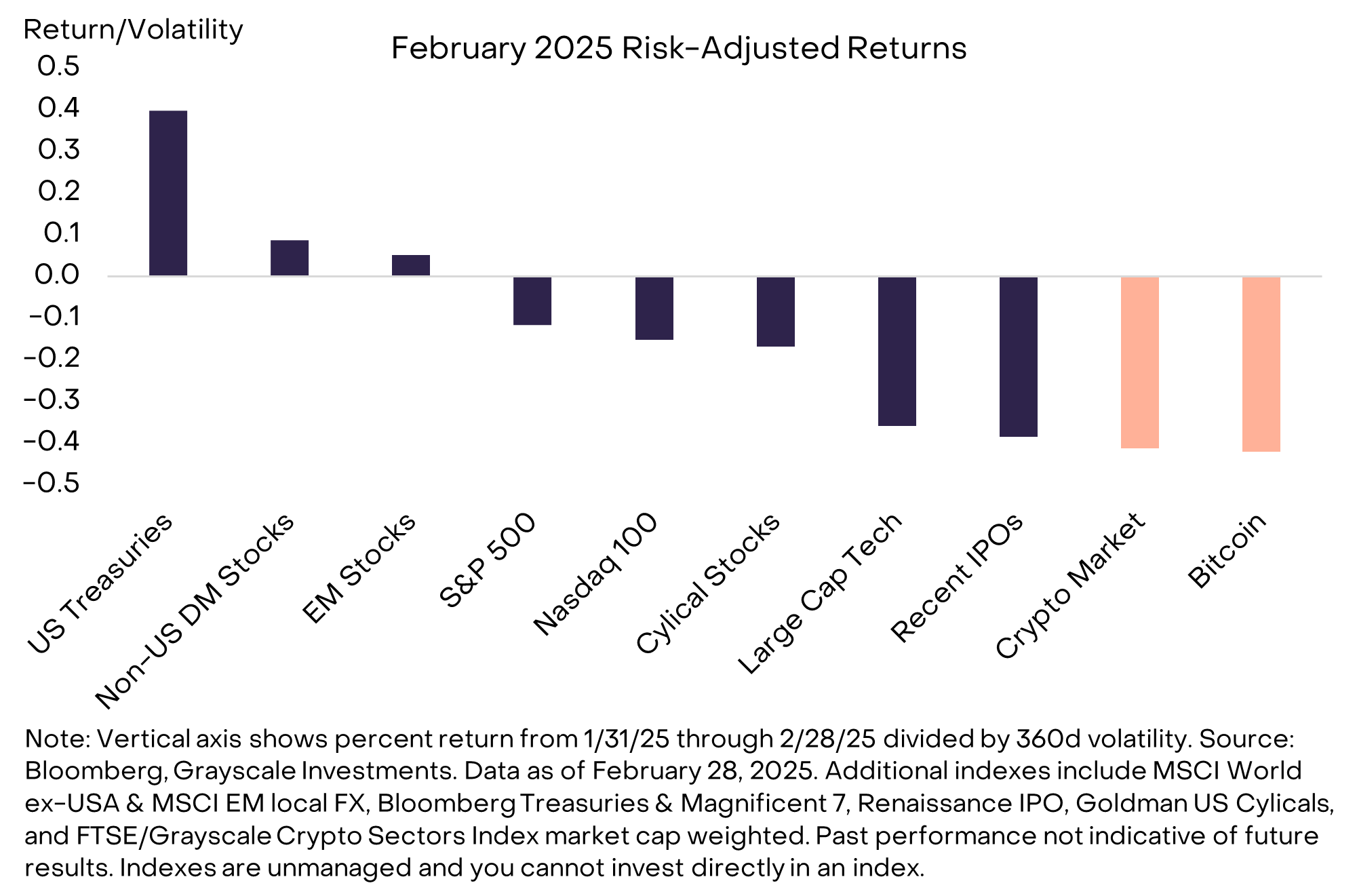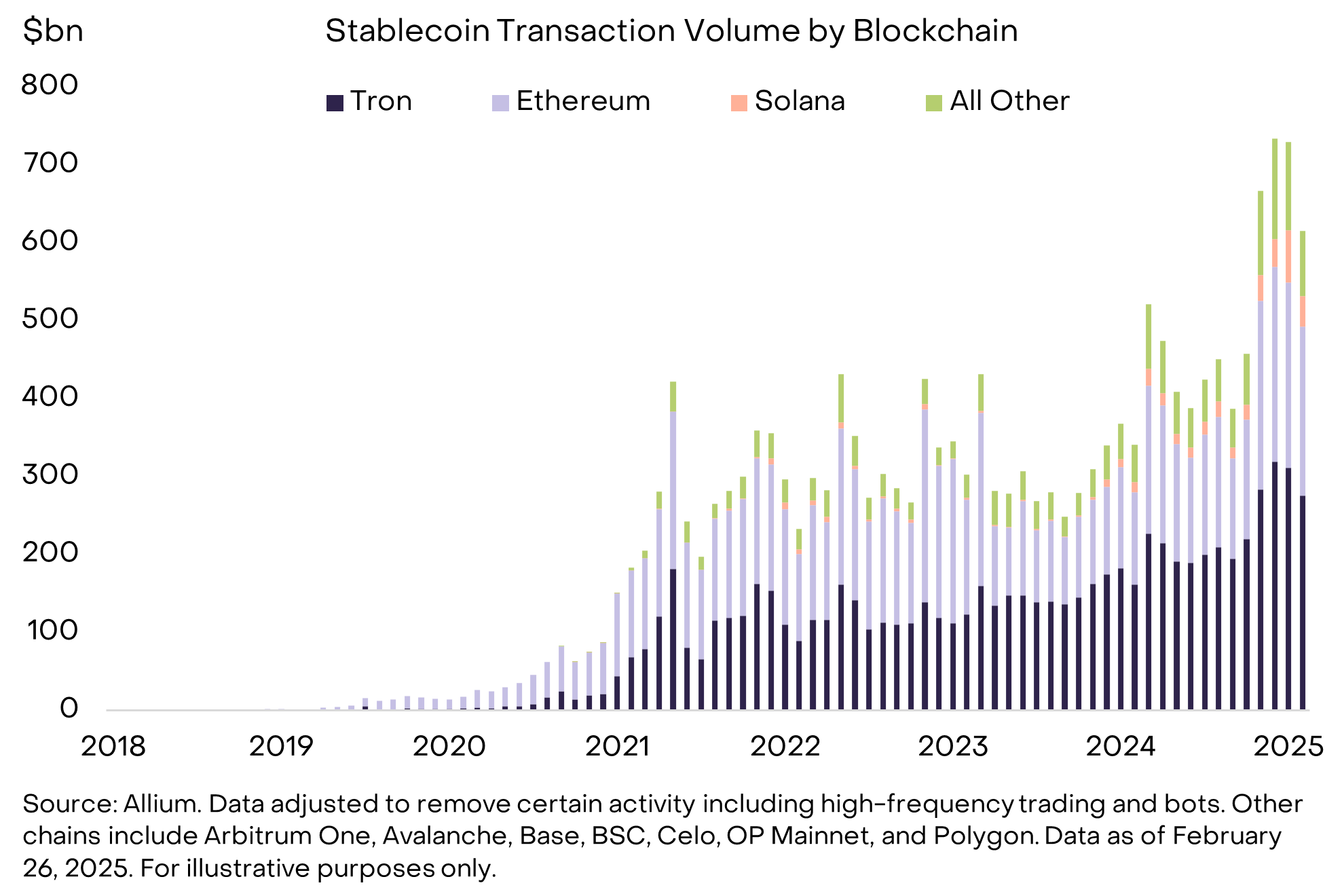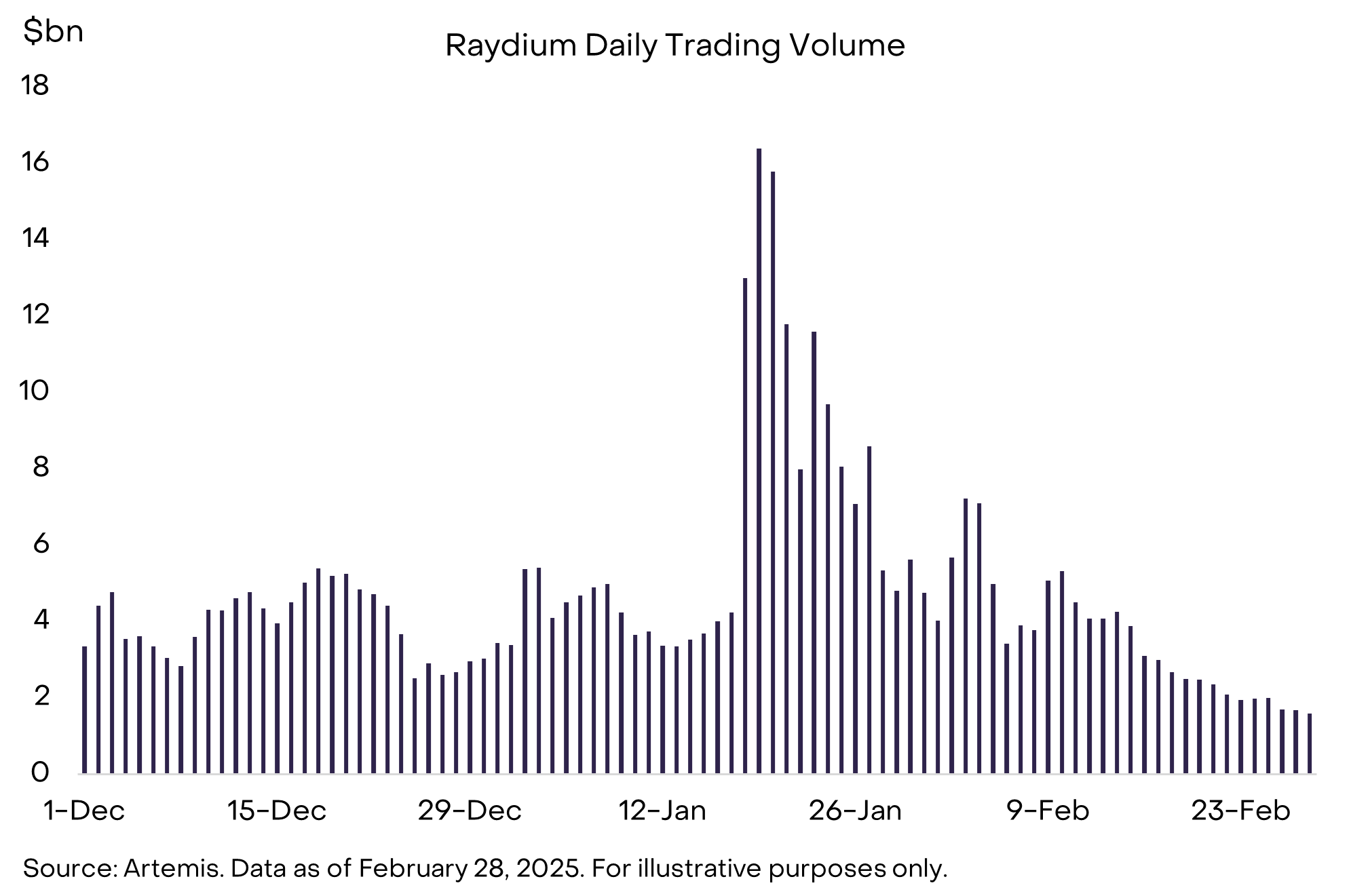- In February 2025, the valuation of Bit currencies experienced a correction, due to factors such as rising macroeconomic risks and declining technology stock prices. A hack attack on a major Bit currency exchange and lower MEME coin trading activity may also have impacted the market.
- At the same time, the regulatory environment for the Bit currency industry in the United States continued to improve: the U.S. Securities and Exchange Commission (SEC) ended or suspended multiple enforcement actions initiated by the previous leadership, and a bipartisan group of senators introduced new stablecoin legislation. Over the weekend, breaking news also saw former President Trump emphasize the proposed Bit currency strategic reserve.
- Changes in the macroeconomic outlook may continue to be a source of short-term volatility in the Bit market. Given the improving fundamentals in the industry, the decline in token valuations may present an attractive entry point for long-term investors.
The Bit currency market in February 2025 presented a stark contrast, with the market capitalization declining, but most of the fundamental news being positive. Although there was a short-term correction, with the improvement in fundamentals, the long-term outlook should lay a solid foundation for technological development and user adoption.
Exhibit 1: Bit currency valuations decline along with technology stocks

Under the policies of the Trump administration, the Securities and Exchange Commission (SEC), led by Acting Chair Uyeda, has begun to adjust its approach to the Bit industry. First, the agency has terminated or suspended investigations into several Bit institutions, including Coinbase, Binance, OpenSea, Uniswap, ConsenSys, and Robinhood.
Additionally, a bipartisan group of senators has introduced the Guidance and Establishment of the United States Stablecoin National Innovation Act (GENIUS). This legislation, building on previous congressional efforts, aims to provide a comprehensive regulatory framework for the issuance of payment Stablecoins in the United States. Key provisions include defining the concept of "permitted payment Stablecoin issuers" and requiring Stablecoins to be backed at least 1:1 by U.S. Treasuries, insured deposits, or closely related instruments.
According to Allium data, Stablecoins currently process over 100 million transactions per month, with a total volume of around $600 billion (Chart 2; data adjusted to exclude high-frequency trading and bots).
Exhibit 2: Growth in Stablecoin transactions

The improvement in the structure of the Bit currency market may be driving greater institutional investor participation. Currently, hundreds of institutional investors have gained exposure to Bit currencies through investments in venture capital funds and hedge funds. Recent Q4 2024 13F filings show that the Abu Dhabi sovereign wealth fund, Mubadala Investment Company, has invested in U.S.-listed Bit currency exchange-traded products (ETPs).
While the Bit currency industry is benefiting from clearer regulation and institutional adoption, it has also faced some recent setbacks. Most notably, on February 21st, the world's second-largest Bit currency exchange, Bybit, was the victim of a hack attack, losing approximately $1.5 billion in Ether and similar assets, which is believed to have been carried out by North Korea's Lazarus group. This attack has become the largest in Bit currency history, underscoring the ongoing need for cybersecurity improvements. However, no user funds were lost, and observers have generally praised the exchange's crisis response measures.
Recently, the thriving Solana ecosystem has slowed down due to a decline in meme coin activity. In the months prior, meme coin activity had driven significant transaction volume and fee revenue on the Solana blockchain, even attracting the attention of former President Trump and the First Lady (see our report for more background). However, with the launch of meme coins associated with Argentine President Javier Milei and the disclosure of misconduct by some meme coin promoters, the Solana ecosystem has cooled.
Exhibit 3: Slowdown in Memecoin trading on Solana

We expect the Bit market to move past the Bybit hack incident and the recent developments around memecoins. However, macroeconomic conditions may continue to be a source of volatility in the coming months. The Trump administration has begun implementing its economic policy agenda, including reducing immigration, raising tariffs, and cutting government spending. While many voters may support these policies - they were core elements of President Trump's campaign - most economists expect these policies to reduce economic growth in the short term.
However, given the steady improvement in fundamentals, we do not expect Bit currency valuations to remain persistently weak. With the enhancement of market structure and regulatory transparency, increased adoption of Stablecoins and other technologies, breakthroughs in decentralized AI, and growing demand for Bit as a solid monetary asset, the prospects for the Bit asset class look bright. Therefore, for investors with little or no allocation to Bit assets, the lower valuations may present an opportunity to increase their exposure and participate in the potential upside.
Index Definitions:
The MSCI ACWI ex USA Index covers large and mid-cap stocks across 22 of 23 Developed Markets countries (excluding the United States) and 24 Emerging Markets countries.
The MSCI Emerging Markets Index covers large and mid-cap stocks across 24 Emerging Markets countries.
The Bloomberg-Barclays US Treasury Index measures the nominal total return of the US government bond market with maturities over one year.
The Bloomberg Magnificent 7 Total Return Index (BM7T) is an equal-weighted index that tracks the seven most broadly traded US companies.
The Renaissance IPO Index is a portfolio of companies that have recently completed an initial public offering (IPO) and are listed on a US exchange.
This index tracks the performance of a group of cyclical stocks and a group of defensive stocks.
The FTSE/Grayscale Crypto Sectors Index (CSMI) measures the price return of digital assets listed on major global exchanges.
The Nasdaq 100 Index is an index of 100 of the largest domestic and international non-financial companies listed on the Nasdaq Stock Market, ranked by market capitalization.
The S&P 500 Index is a market-capitalization-weighted index of 500 leading publicly traded companies in the U.S.








